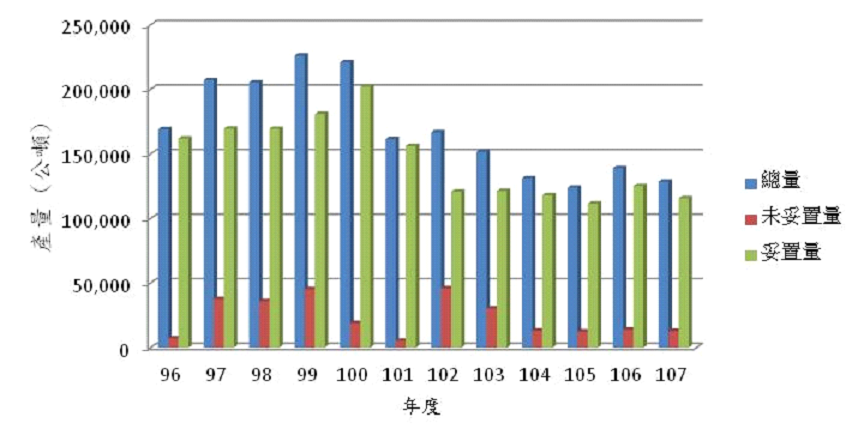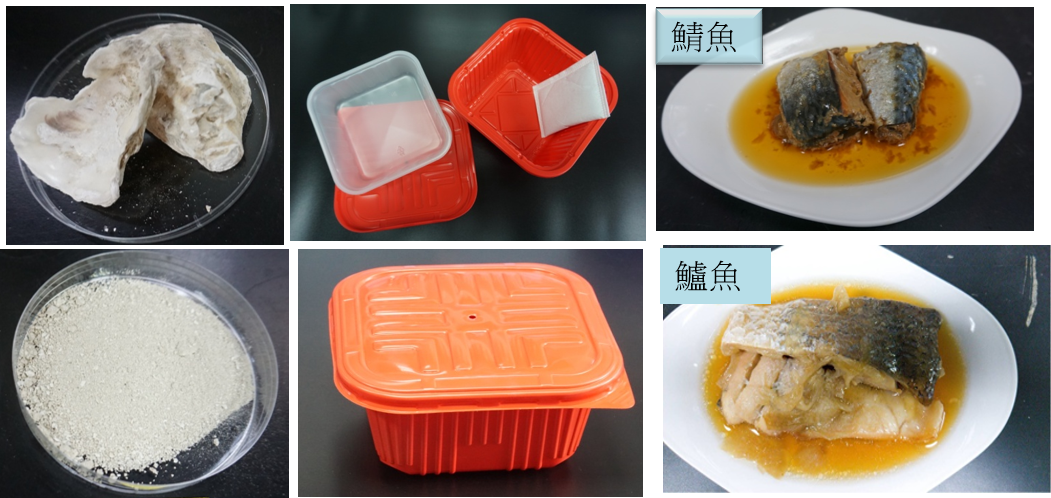Heating food without fire? In response to the busy life of modern people, "self-heating food", which allows consumers to enjoy hot food without fire, has quietly entered the Internet and convenience supermarkets with special heating packages. The Fisheries Research Institute of the Council of Agriculture has noticed the new consumption trend and successfully developed a "heating set of instant conditioning meal package" with oyster shells. Compared with the general chemical synthesized heating package, the self-heating package developed and manufactured by using oyster shells is more natural, environmentally friendly, and safe at a cost reduction of 20%, which is quite competitive. The oyster shell heating set can be customized according to the requirements of food manufacturers for reheating food, with a wide range of applications. It is optimistic that the current market value of Taiwan's normal temperature prepared food is as high as NT$1.15 billion. The oyster shell heating set launched by the Fisheries Research Institute has taken the lead in the market shares, and future market development is very promising.
According to the Fisheries Research Institute, Taiwan produces 169,000 metric tons of waste oyster shells each year, of which 23,000 metric tons are not properly disposed. In the past, 42% of oyster shells were used as feed, 21% as compost, and 11% as seedling culture medium, with generally low added value. Waste oyster shells are often stacked beside culture ponds, which not only occupy space, but also easily cause environmental pollution from waste shells and meat. Therefore, since 2018 the Fisheries Research Institute has introduced the key value-added technology of oyster shell and developed diversified products to solve the problem of aquatic waste and pursue a circular economy of waste reduction and emission reduction. In 2019 the program of "research on oyster shell as a spontaneous heat source for prepared food" was launched. The Fisheries Research Institute processed and modified the oyster shell calcium carbonate into calcium oxide, which releases heat in water, and made a spontaneous heat source package. After more than one year of research and development efforts, by introducing the aquatic product conditioning package processing technology developed by the Fisheries Research Institute, the "heating set of instant conditioning meal package" was introduced by combining tilapia, perch, chanos, etc. It is both innovative aquatic self-heating food and helps to timely adjust the imbalance between production and marketing of the above farmed fish.
The oyster shell heating set technology is currently being patented, hoping to bring a more convenient self-heating diet for modern people who are busy with their lives. Small families who seldom cook, office workers who often eat out, and campers and climbers are the main objects of mass appeal. According to the Fisheries Research Institute, the oyster shell self-heating package can heat the water outside the conditioning package up to 90°C in 6-7 minutes and can heat the conditioning package temperature up to about 50°C. The temperature is able to be maintained for at least 20 minutes. According to the research report, the optimal eating temperature for the human mouth and esophagus is usually 10~40°C, and the maximum tolerable palatable temperature is 50~60°C. With oyster shell as the heat source, the temperature of reheated products is in line with the optimal temperature for the human mouth and esophagus.
The first oyster shell heating technology developed in Taiwan has gone through various challenges. There are many factors affecting the heating effect, including the proportion of each component of the spontaneous heat source, the proportion of water added, etc. The size of the conditioning package and the package material also need to be tested repeatedly to adapt to various conditions. Moreover, the process of finding the ideal package material consumes a lot of time an labor. Oyster shell heating package technology is nowadays mature and can help manufacturers adjust the heating temperature according to the customization of reheated products, which has become a new force in the market of normal-temperature prepared food. At present, the cost of an oyster shell heating package is NT$12.7 per package, which is savings of at least NT$2.3 compared with the price of about NT$15 for food heating package on the market. The Fisheries Research Institute expects that when the technology is transferred to production, it will generate at least NT$10.35 million in annual revenue, creating new output for the circular economy. Moreover, there are no relevant products in Taiwan, and so the market potential is strong. Thus, it will give priority to the layout of the Taiwan market.
By mastering consumption trends and developing trendy products, the Fisheries Research Institute aims to reverse the declining value of the oyster shell industry. With the combination of upgrading oyster shell technology and the aquatic product conditioning package technology developed by the Fisheries Research Institute, the "heating set of instant conditioning meal package" was launched to activate and reuse oyster materials and create a circular economy industrial value chain. The research and development of new products with multiple applications of oyster shells also include research on the intelligent air control and antibacterial fresh-keeping device as well as the water purification for aquaculture ponds of ivory shells. It will continue to improve the utilization level of waste aquatic products, in order to implement the circular economy and pursue sustainable operations.
Seafood Technology Division Fisheries Research Institute, Council of Agriculture

Figure 1 Annual Output and Proper Processing Quantity of Oyster Shells

Figure 2 "Heating Set of Instant Conditioning Meal Package"